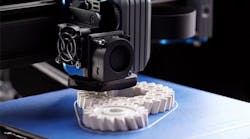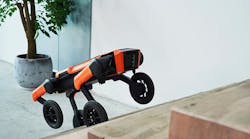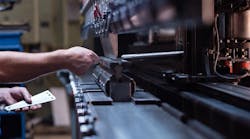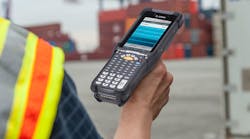As digital transformation enables rapid change in traditional operations, organizations are finding new and more efficient ways to do business. Interactions between trading partners are becoming automated, reducing the amount of time required to complete and manage transactions and, in many cases, changing the way those transactions take place.
This is affecting companies in all industries, from process manufacturers, utilities and infrastructure contractors to upstream and midstream oil and gas organizations. Businesses in these areas rely heavily on the profitable operation of capital assets, and decision-makers are increasingly having to do more with less while predicting and quickly adapting to market changes—not to mention keeping to strict regulatory environments.
In order to drive more efficient operations and realize new revenue opportunities, there are three key areas asset-intensive businesses should focus on: the Internet of Things (IoT), reliability-centered maintenance, and lean asset management.
1. IoT—Connecting People With Processes
No sector is as advanced in its progress towards effective use of IoT as the asset management industry. Organizations in this space have been doing this well before the term IoT was created.
Whether we call it SCADA, automatic data capture, or IoT, sensors on equipment can facilitate condition monitoring and condition-based maintenance as well as enable real-time monitoring of performance, quality, and reliability of all equipment—anywhere, any time.
Maintenance professionals armed with this data can deliver predictive maintenance based on real-time information about the condition of equipment, rather than delivering a break/fix service or simply executing calendar-based maintenance programs.
But what makes modern IoT even more useful now are the smart devices that collect data from equipment and machinery working in the background. This accumulation of equipment performance and reliability data can enable comparisons of individual pieces of equipment with others of the same type or model.
That comparative data can support asset lifecycle decision-making at the executive level and create an accurate record and understanding of the true productive capacity and serviceability of a portfolio of asset types. It can also give original equipment vendors a deeper understanding of product quality issues so they can be proactively corrected during field upgrades or design processes.
2. RCM3—Getting Creative
Reliability-centered maintenance (RCM) is a set of best practices for asset management that originated in the aerospace industry but has since been turned into a formal system by consulting firm Aladon.
The company, whose trademarked RCM2 built on existing RCM strategies, extends the maintenance strategy to include the environmental consequences of asset management decisions. More recently, Aladon released RCM3, which extends the RCM method to include risk management and, more interestingly, creativity.
According to Aladon Network member Carlo Odoardi, creativity, and the ability to recognize and seize opportunities as they unfold, are critical even for asset-intensive organizations.
"A survey of 1,500 CEOs conducted by IBM's Institute for Business Value identifies creativity as the most essential leadership competency," Odoardi said, contrasting this with more traditional priorities like business discipline and managerial control.
"This shift in thinking is because increasing global complexity is the biggest thing they're facing today. CEOs see a huge gap between today's business complexity and the confidence they have in their people to handle it. Today, business is massively complex, super-interconnected, and intricately interdependent from an economic, social, and political perspective. We're managing our sites as a 'system of systems'. CEOs are turning to continuous innovative improvement and creative disruption to compete with world-class companies."
Creativity in the management of capital assets requires good access to real-time data so executives can take advantage of opportunities or address emerging concerns.
Without a rigorous methodology like RCM3, even if you do have real-time visibility into your asset readiness or the ability of your plant personnel, you may not be able to plan and operationalize rapidly enough to capitalize on the possibilities that present themselves.
3. Lean Asset Management—Automating Key Stages of the Asset Lifecycle
IoT is not new to the industrial space, and RCM is a proven, time-tested system. But perhaps the newest and unsung heroes that could digitally transform asset management are the tools designed to fully automate complete asset lifecycles—from specification and design to construction and start-up.
While manufacturers have relied on EAM software to streamline configure-to-order manufacturing processes for decades, asset-intensive organizations have typically lacked this type of functionality. This means engineering-oriented companies, which may design, fabricate, and install equipment in a facility, have not digitally evolved to the same extent as their manufacturing counterparts.
Generating a reliable quotation for a project meant engaging in a substantive design process and substantial work and sunk cost before a company could submit a bid. Once the bid was generated, that proposal or bid document must be turned into a project structure, bids for work, and subcontracts must be let and the project executed right through the handover to operations.
In most asset management organizations, these steps are disconnected and result in non-value-added work. But with software designed for lean asset management, the standard elements and configuration questions required to accurately identify cost, let bids to contractors, and populate and project a plan are all part of a single workflow. This gives contractors the ability to submit an accurate bid much faster than their competitors as it eliminates design, planning, and administrative hours from the project as the final asset structure is created automatically.
Plant managers also stand to benefit from this as they are now able to get an accurate project proposal to management almost instantaneously, which enhances enterprise agility and lets the business seize opportunities before their competitors.
Once the proposal is approved, the software can send out the requisite work orders, send requests for quotations to contractors and enable maintenance department staff to put their time against the project as required. It can also capture the cost of materials out of inventory to complete the project, all with no additional administrative overhead or duplicate effort.
Making It Real
Although worthwhile, implementing any of these three approaches won't be instantaneous. Determining which of these approaches will help you reach your business goals and formulating a practical approach will be the first step in the digital transformation process.
In some cases, a change in an underlying business system of record will be required and, in selecting a new platform, these are the three areas asset-intensive organizations should focus on to ensure digital transformation can get them where they need to go, now and in the future.














